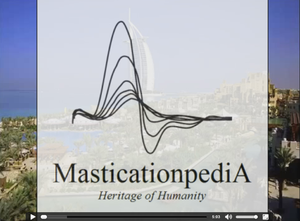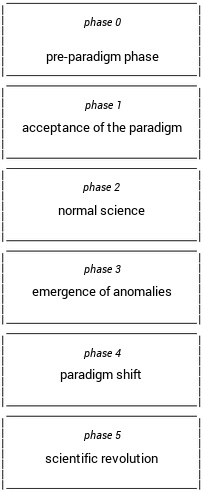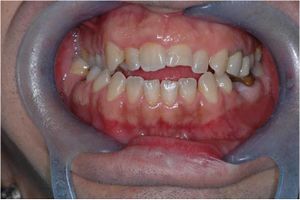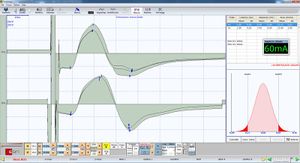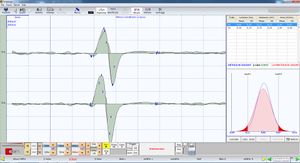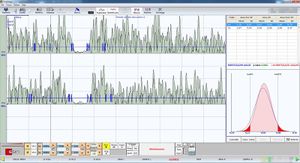Introducción
Nos gustaría que nuestro lector tuviera una percepción inmediata de los temas que serán debatidos en Masticationpedia; repasaremos algunos de los temas más actuales sobre la evolución epistemológica de la ciencia en general, y de la medicina médica y odontológica en particular.
You can also watch a video of ours on Youtube, for your convenience.
Introducción
En esta fase consideraremos dos aspectos fundamentales del Progreso de la ciencia, según los Paradigmas de Kuhn, y la Epistemología que cuestiona los conceptos de "Inferencia estadística" y "Interdisciplinariedad".
Estos dos temas, que aparentemente parecen estar en conflicto entre sí, ya que el primero necesita disciplinariedad para resaltar las 'Anomalías en el Paradigma' y el segundo necesita Interdisciplinariedad, se integrarán a través de un elemento resolutivo que consiste en "andamios metacognitivos", es decir, puentes cognitivos entre disciplinas especializadas. En este contexto, por lo tanto, el lector podrá apreciar mejor el enfoque estocástico hacia uno de los temas más controvertidos en las rehabilitaciones masticatorias, como es, "Maloclusión", del cual provienen la mayor parte de los procedimientos de rehabilitación masticatoria como ortodoncia, prótesis y cirugía ortognática.
Entonces, además de anticiparnos al aspecto científico y filosófico de Masticationpedia, finalmente nos enfocaremos en temas como "Sistemas complejos", el "Comportamiento emergente" de los sistemas complejos y la "Coherencia del sistema": pasos necesarios para introducir temas clínicos científicos que traen con ellos dudas, interrogantes y al mismo tiempo innovaciones paradigmáticas tendientes a cambiar el status quo de la “rutina” del pensamiento clínico determinista y reduccionista, ante una lógica de lenguaje estocástica e interdisciplinar.
Article by Gianni Frisardi
|
Ab ovo[1]
Antes de llegar al corazón del tratamiento de Masticationpedia, conviene una premisa, que concierne principalmente a dos aspectos de la realidad social, científica y clínica de la era actual y la inmediatamente anterior.
En el último siglo, fuimos testigos de un crecimiento exponencial de las "innovaciones" tecnológicas y metodológicas específicamente en la odontología.[2]; estas innovaciones han influido de alguna manera en las estrategias de toma de decisiones, opiniones, escuelas de pensamiento y axiomas con el fin de mejorar la calidad de vida, como se indica en la "Ciencia de la exposición en el siglo XXI".[3]. Sin embargo, este crecimiento exponencial trae consigo, implícitamente, áreas grises conceptuales (en términos prácticos "efectos secundarios") que en ocasiones se subestiman, pero que pueden poner en tela de juicio algunas certezas científicas o hacerlas menos absolutas y más probabilísticas.[4]
Los dos aspectos sensibles de la realidad social, científica y clínica actual (que parecen entrar en conflicto entre sí, pero que como veremos al final de esta lectura serán complementarios) son el "Progreso de la ciencia" según Kuhn y el " Epistemología ".
Progreso de la ciencia según Thomas Kuhn
Thomas Kuhn en su obra más famosa afirma que "la ciencia pasa cíclicamente por algunas fases indicativas de su funcionamiento".[5][6] Según Kuhn, "la ciencia es paradigmática", y la demarcación entre ciencia y pseudociencia se remonta a la existencia de un "'paradigma'". La evolución del progreso científico se asimila a "una curva continua que sufre discontinuidad en los cambios de paradigma". Por ejemplo, en la fase 2 de los Paradigmas de Kuhn, denominada 'Ciencia Normal' , los científicos son vistos como solucionadores de problemas, que trabajan para mejorar la concordancia entre el paradigma y la naturaleza.
Esta fase, de hecho, se sustenta en un conjunto de principios básicos dictados por el paradigma, que no son cuestionados pero a los que, efectivamente, se les encomienda la tarea de indicar las coordenadas de las obras por venir. En esta fase se desarrollan los instrumentos de medida con los que se realizan los experimentos, se elaboran la mayoría de los artículos científicos y sus resultados constituyen un crecimiento significativo del conocimiento científico. En la fase científica normal se conseguirán tanto los éxitos como los fracasos; Kuhn llama a las fallas "anomalías" o "eventos que van en contra del paradigma".
Como buen solucionador de problemas, el científico intenta resolver estas anomalías.
Kuhn, sin embargo, divide la evolución de un paradigma en "cinco fases"; este es un proceso fundamental para Masticationpedia, pero para estar en sintonía con el proyecto, nos limitaremos a describir las dos fases más significativas:
| |
|
Es casi obvio que la filosofía científica kuhniana prefiere la disciplina, ya que un genetista notará mejor una anomalía en el paradigma genómico que un neurofisiólogo. Ahora bien, este concepto parecería estar en contraste con la evolución epistemológica de la ciencia, por lo que es mejor detenerse un minuto en él en detalle.
Epistemología
| El cisne negro simboliza uno de los problemas históricos de la epistemología: si todos los cisnes que hemos visto hasta ahora son blancos, ¿podemos decidir que todos los cisnes son blancos? En serio? |
|
| Kuhn usó la ilusión óptica para demostrar cómo un cambio de paradigma puede hacer que una persona vea la misma información de una manera completamente diferente: ¿qué animal es el que está aquí al lado? Seguro? |
'Epistemología' (del griego ἐπιστήμη, epistème , "cierto conocimiento" o "ciencia", y λόγος, logos , "habla") es la rama de la filosofía que se ocupa de la condiciones bajo las cuales se puede obtener el conocimiento científico y los métodos para lograrlo.[7] El término indica específicamente aquella parte de la gnoseología que estudia los fundamentos, validez y límites del conocimiento científico. En los países de habla inglesa, el concepto de epistemología se utiliza principalmente como sinónimo de gnoseología o teoría del conocimiento, la disciplina que se ocupa del estudio del conocimiento.
Por cierto, el problema básico de la epistemología actual, como en la época de Hume, sigue siendo el de la verificabilidad.[8][9]
La paradoja de Hempel nos dice que cada cisne blanco avistado confirma que los cuervos son negros[10]; es decir, `` cada ejemplo que no contrasta con la teoría confirma una parte de ella :
According to the objection of falsifiability, instead, no theory is ever true because, while there are only a finite number of experiments in favour, there is also theoretically an infinite number that could falsify it.[11]
|
But it’s not all so obvious... |
...because the very concept of epistemology meets continuous implementations, like in medicine:
|
|
Anomaly vs. Interdisciplinarity
Given the above, on a superficial view of the epistemic evolution of the Science, the two aspects of disciplinarity ("Physics Paradigm of Science", highlighting the anomaly) and Interdisciplinary ("Engineering Paradigm of Science", metacognitive scaffold), might seem to be in conflict with each other; in reality, however, as we are just going to see right in this chapter, they are two sides of the same coin because both tend to generate "Paradigmatic Innovation" without any conflict at all.
Now we could conclude that the "Innovations" are already "Progress of Science" in themselves, as stated in the article "Scientific basis of dentistry" by Yegane Guven, in which the effect of biological and digital revolutions is considered on dental education and daily clinical practice, such as personalized regenerative dentistry, nanotechnologies, virtual reality simulations, genomic information and stem cell studies.[21] The innovations mentioned by Guven are obviously to be considered as technological and methodological in nature; however, the Progress of Science does not move forward with this kind of Innovations, which are called "Incremental Innovations" and "Radical Innovations", but it occurs substantially through "Paradigmatic Innovations".
In the strictest sense of the phrase, "Paradigmatic Innovations" are essentially a change of thought and awareness that pervades the whole of humanity, starting from different social strata, from the Copernican scientific revolution to the current trend of Stochastic approach to the biological phenomenon[22].
In this epistemological context (in addition to other initiatives such as the Research Diagnostic Criteria in the field of the Temporomandibular Disorders — RDC/TMDs), of the Evidence Based Medicine (and other), the Masticationpedia project inserts itself in order to highlight the dialectics dynamism about the progress of the masticatory rehabilitation science. Masticationpedia tends, moreover, to highlight the anomalies that inevitably stimulate a change of thought and therefore a "Paradigmatic Innovation".
Before proceeeding, it could be appropriate to observe a very concrete and significant case.
Malocclusion
Malocclusion: it literally means a bad (malum, in Latin) closure of the dentition[23]. The closure is easy to understand, we believe, but the epithet "bad" must be understood with care as well, because it is not as simple as it seems.
To briefly grasp the concept, in this first introductory reading we will try to present a simple but highly debatable question that involves a series of other questions in the field of masticatory rehabilitation and especially in orthodontic disciplines: what is "Malocclusion"? Bear in mind that in 2019, a Pubmed query about this term returned a result of "only" 33,309 articles[24], which says it all about the hypothetical terminological agreement on the subject; and, therefore, very meaningful conclusions could be drawn every now and then from these articles, such as the ones we reproduce in full from an article by Smaglyuk and collaborators, a somewhat "sensational" article that deals with the interdisciplinary approach in the diagnosis of malocclusions[25]:
Another noteworthy fact is that if in the same 2019 Pubmed was questioned on interdisciplinarity in the diagnosis of malocclusions, the result dropped drastically to just four articles[26].
These premises to the "Malocclusion” question indicate, on one hand, an alert about anomalies that tend to activate Kuhn phase 4 and, on the other, a bifurcation in the epistemic choice on the subject: one that generates Incremental Innovations (others 33,309 articles, perhaps) and another that prefers a new gnoseological path of "Paradigmatic Innovation”.
Let’s try to approach part of the concept that considers the "Paradigmatic Innovation” as essential, asking ourselves for example:
|
What does "Malocclusion" mean? |
We will answer this question by reporting a clinical case of evident “Malocclusion”.
Patient is with an occlusion that orthodontists call “Malocclusion” because it has a posterior unilateral crossbite and anterior openbite[27]; it is a malocclusion that can be treated with a fixed orthodontic therapy and possibly in combination with an orthognathic intervention[28]. Crossbite is another element of disturbance in normal occlusion because of which it is obligatorily treated together with the openbite[29][30][31].
It is self-evident that an observer with a deterministic mindset facing a phenomenon of such evident occlusal incongruity considers crossbite and openbite the cause of malocclusion (cause/effect) or vice versa; and it is obvious, as well, that the observer recommends an orthodontic treatment to restore a “Normocclusion”. This way of reasoning means that the model (masticatory system) is “normalized to occlusion”; and if read backwards, it means that the occlusal discrepancy is the cause of malocclusion and, therefore, of disease of the Masticatory System. (Figure 1a).
But let's hear what the two players say, the dentist and the patient, in the informative dialogue.
| The dentist tells the patient that he is suffering from severe malocclusion and that it should be treated to improve its aesthetics and chewing function. The patient, however, replies firmly: «No way, I haven't the slightest idea to do it at all, doctor, because I might even have an unrepresentative smile, but I eat very well.» The dentist’s reply is ready, so the practitioner insists by saying: «but you have a serious malocclusion with an openbite and a unilateral posterior crossbite, you should already have problems with bruxism and swallowing, as well as posture.» The patient closes the confrontation in a decisive way: «absolutely false: I chew very well, I swallow very well and at night I snore alot so I don’t grind; besides, I’m a sportsman and I don’t have any postural disturbance». |
Now the conclusion remains very critical because we might be finding ourselves in front of a verbal language of the patient which is misleading because it is not specific and does not respond to a detailed physiopathogenetic knowledge of the occlusal state; or, paradoxically, we are otherwise facing a machine language converted into verbal language which guarantees the integrity of the system. At this point the situation is truly embarrassing because neither the patient nor the observer (dentist) will be able to say with certainty that the System is in a “Malocclusion” state.
It is precisely at this moment that one remembers the criticism of the American Statistician Association titled “Statistical inference in the 21st century: A World Beyond p <0.05”, which urges the researcher to accept uncertainty, be sensible reflective, open and modest in his statements[16]: which basically translates into a search for interdisciplinarity.
Interdisciplinarity, in fact, could answer such a complex question; but it is nonetheless necessary to interpret the biological phenomenon of "“Malocclusion”" with a stochastic forma mentis of which we will discuss in detail later.
A stochastic observer may observe that there is a low probability that the patient, at the moment , is in a state of occlusal disease, as the patient's natural language indicates ideal psychophysical health; he/she then concludes that the occlusal discrepancy could not be a cause of neuromuscular and psychophysical functional disorder. In this case, therefore, the Masticatory System can not only be normalized to the occlusion only, but a more complex model is needed too, so it has to be normalized to the Trigeminal Nervous System. The patient was then served a series of trigeminal electrophysiological tests to assess the integrity of his/her Trigeminal Nervous System in these “"Malocclusion”" clinical conditions.
We can see the following output responses, which we report directly in figures 1b, 1c and 1d (with explanation in the caption, to simplify the discussion). These tests and their description by now should only be considered as “Conceptual Rationale” for the “Malocclusion” question; later they will be widely described and their analysis detailed in the specific chapters. It can already be noted in this first descriptive approach to the masticatory phenomenon that there is an evident discrepancy between the occlusal state (which at first would support the orthodoxy of classical orthodontics in considering it as “Malocclusive State”) and the neurophysiological data indicating incredible synchronization and perfect symmetry of the trigeminal reflexes.
These results can be attributed to anything less than a "malocclusion": we are obviously in front of an error of the logic Language in medicine, in this case it is in fact more appropriate to talk about...
|
Occlusal dysmorphism and not Malocclusion (which, as we shall see a little further on, is quite another thing) |
Conclusion
Even before drawing conclusions, conceptual clarity must be made on some fundamental points which of course will be treated in detail in the specific chapters of Masticationpedia.
The Masticatory System should be considered as a “Complex System”[32], not as a Biomechanical System focused exclusively on dental occlusion, because in this sense the “Occlusion” is nothing more than a subset of the Complex System interacting with the other subsets, such as periodontal receptors, neuromuscular spindles, recruitment of motor units, central nervous system, temporomandibular joint, etc., to give shape to an “Emerging Behaviour”, the masticatory one.
The peculiarity of this concept is that it is not possible to interpret or predict the “Emerging Behaviour” of a System by extracting objective data from a single subset. Instead, the integrity of the System must be quantified in its entirety, and only then can a segmentation of the whole be attempted to make an analytical description of the node itself. There are very important intellectual and scientific movements that are engaging with this issue; in this regard, the extraordinary work of Prof. Kazem Sadegh-Zadeh: Handbook of Analytic Philosophy of Medicine comes to mind.[33]
In the presented case, the question is resolved in the following language logic:
- The subsets of the Masticatory System (teeth, occlusion, Temporomandibular joints, muscles, etc.) are in a state of "Coherence” with the Central Trigeminal Nervous System (see figures 1b, 1c and 1d), so the term “Malocclusion” cannot be used, the phrase “Occlusal Dismorphism” should be considered instead.
- «This does not mean abolishing prosthetic, orthodontic and orthognathic masticatory rehabilitation treatments: on the contrary, this forma mentis tends to restore medical knowledge to dental rehabilitation disciplines, as well as offering an alternative to the scientific reductionism that converges in a deterministic interpretation of the biological phenomenon.»
Going beyond the specialist perimeters of the disciplines, as previously reported on interdisciplinarity, helps expanding the diagnostic and therapeutic models as it can be seen in the clinical Case in which a patient was treated with the OrthoNeuroGnathodontic method is reported.
In this way, an overall view of the entire Masticatory System is presented in order to gather the aesthetic and functional-neurophysiological components together to determine “Occlusal Stability” and to avoid “Relapses”, especially in orthodontic and orthognathic treatments.[34][35]
These are just some of the topics that will be covered extensively both in this chapter and in what we call “Extraordinary Science”. Meanwhile, in a fitting diversion our colourful friend Linus Sapiens, the little yellow man on the left, asks us:
- ↑ Latín para "desde el principio"
- ↑ Heft MW, Fox CH, Duncan RP, «Assessing the Translation of Research and Innovation into Dental Practice», in JDR Clin Trans Res, 2019.
DOI:10.1177/2380084419879391 - ↑ «Exposure Science in the 21st Century. A Vision and a Strategy», Committee on Human and Environmental Exposure Science in the 21st Century; Board on Environmental Studies and Toxicology; Division on Earth and Life Studies; National Research Council..
ISBN: 0-309-26468-5 - ↑ Liu L, Li Y, «The unexpected side effects and safety of therapeutic monoclonal antibodies», in Drugs Today, 2014, Barcellona.
DOI:10.1358/dot.2014.50.1.2076506 - ↑ Thomas Samuel Kuhn (Cincinnati, 18 julio 1922 – Cambridge, 17 junio 1996) fue un filósofo de la ciencia estadounidense.
Ver Treccani, Kuhn, Thomas Samuel. Wikipedia, Thomas Kuhn. - ↑ Kuhn Thomas S, «The Structure of Scientific Revolutions», Univ. of Chicago Press, 2012, Chicago.
ISBN: 9780226458113 - ↑ Se cree que el término fue acuñado por el filósofo escocés James Frederick Ferrier en sus `` Institutos de metafísica . (p.46), of 1854; si es Internet Encyclopedia of Philosophy, James Frederick Ferrier (1808—1864). Wikipedia
- ↑ David Hume (Edimburgh, 7 may 1711 – Edimburgh, 25 august 1776) fue un filósofo escocés. Se le considera el tercero y quizás el más radical de los empiristas británicos, después del inglés John Locke y el angloirlandés George Berkeley.
- ↑ Srivastava S, «Verifiability is a core principle of science», in Behav Brain Sci, Cambridge University Press, 2018, Cambridge.
DOI:10.1017/S0140525X18000869 - ↑ Aquí, obviamente, nos referimos a la conocida paradoja llamada "de los cuervos", o "de los cuervos negros", formulada por el filósofo y matemático Carl Gustav Hempel, mejor explicado en el artículo de Wikipedia Raven paradox:
Si es Good IJ, «The Paradox of Confirmation», in Br J Philos Sci, 1960 – in Vol. 11. - ↑ Evans M, «Measuring statistical evidence using relative belief», in Comput Struct Biotechnol J, 2016.
DOI:10.1016/j.csbj.2015.12.001 - ↑ Amrhein V, Greenland S, McShane B, «Scientists rise up against statistical significance», in Nature, 2019.
DOI:10.1038/d41586-019-00857-9 - ↑ Rodgers JL, «The epistemology of mathematical and statistical modeling: a quiet methodological revolution», in Am Psychol, 2010.
DOI:10.1037/a0018326 - ↑ Meehl P, «The problem is epistemology, not statistics: replace significance tests by confidence intervals and quantify accuracy of risky numerical predictions», 1997. , in eds Harlow L. L., Mulaik S. A., Steiger J. H., What If There Were No Significance Tests? - editors. (Mahwah: Erlbaum, 393–425. [Google Scholar]
- ↑ Sprenger J, Hartmann S, «Bayesian Philosophy of Science. Variations on a Theme by the Reverend Thomas Bayes», Oxford University Press, 2019, Oxford.
- ↑ 16.0 16.1 16.2 Wasserstein RL, Schirm AL, Lazar NA, «Moving to a World Beyond p < 0.05», in Am Stat, 2019.
DOI:10.1080/00031305.2019.1583913 - ↑ Dettweiler Ulrich, «The Rationality of Science and the Inevitability of Defining Prior Beliefs in Empirical Research», in Front Psychol, 2019.
DOI:10.3389/fpsyg.2019.01866 - ↑ European Union, Horizon 2020
- ↑
Boon M, Van Baalen S, «Epistemology for interdisciplinary research - shifting philosophical paradigms of science», in Eur J Philos Sci, 2019.
DOI:10.1007/s13194-018-0242-4 - ↑ Boon M, «An engineering paradigm in the biomedical sciences: Knowledge as epistemic tool», in Prog Biophys Mol Biol, 2017.
DOI:10.1016/j.pbiomolbio.2017.04.001 - ↑ Guven Y, «Scientific basis of dentistry», in J Istanb Univ Fac Den, 2017.
PMID:29114433 - PMCID:PMC5624148
DOI:10.17096/jiufd.04646 - ↑ Zhao XF, Gojo I, York T, Ning Y, Baer MR, «Diagnosis of biphenotypic acute leukemia: a paradigmatic approach», in Int J Clin Exp Pathol, 2010.
PMID:19918331 - PMCID:PMC2776262 - ↑ The creation of the term is generally attributed to Edward Angle, considered the father of modern orthodontics, who coined it as a specification of occlusion to signal the incorrect opposition in closing of the lower teeth and upper, especially the first molar (Wikipedia); see Gruenbaum T, «Famous Figures in Dentistry», in Mouth – JASDA, 2010.
- ↑ Pubmed, Malocclusion
- ↑ Smaglyuk LV, Voronkova HV, Karasiunok AY, Liakhovska AV, Solovei KO, «Interdisciplinary approach to diagnostics of malocclusions (review)», in Wiad Lek, 2019.
- ↑ Pubmed, interdisciplinary diagnostics of malocclusions
- ↑ Littlewood SJ, Kandasamy S, Huang G, «Retention and relapse in clinical practice», in Aust Dent J, 2017.
DOI:10.1111/adj.12475 - ↑ Reichert I, Figel P, Winchester L, «Orthodontic treatment of anterior open bite: a review article--is surgery always necessary?», in Oral Maxillofac Surg, 2014.
DOI:10.1007/s10006-013-0430-5 - ↑ Miamoto CB, Silva Marques L, Abreu LG, Paiva SM, «Impact of two early treatment protocols for anterior dental crossbite on children’s quality of life», in Dental Press J Orthod, 2018.
- ↑ Alachioti XS, Dimopoulou E, Vlasakidou A, Athanasiou AE, «Amelogenesis imperfecta and anterior open bite: Etiological, classification, clinical and management interrelationships», in J Orthod Sci, 2014.
DOI:10.4103/2278-0203.127547 - ↑ Mizrahi E, «A review of anterior open bite», in Br J Orthod, 1978.
- ↑ Complex system in Wikipedia
- ↑ Sadegh-Zadeh Kazem, «Handbook of Analytic Philosophy of Medicine», Springer, 2012, Dordrecht.
ISBN: 978-94-007-2259-0
DOI:10.1007/978-94-007-2260-6 - ↑ Al-Moraissi EA, Wolford LM, «Is Counterclockwise Rotation of the Maxillomandibular Complex Stable, Compared With Clockwise Rotation, in the Correction of Dentofacial Deformities? A Systematic Review and Meta-Analysis», in J Oral Maxillofac Surg, 2016.
DOI:10.1016/j.joms.2016.06.001 - ↑ Hoffmannová J, Foltán R, Vlk M, Klíma K, Pavlíková G, Bulik O, «Factors affecting the stability of bilateral sagittal split osteotomy of a mandible», in Prague Med Rep, 2008.
PMID:19537679
particularly focusing on the field of the neurophysiology of the masticatory system
